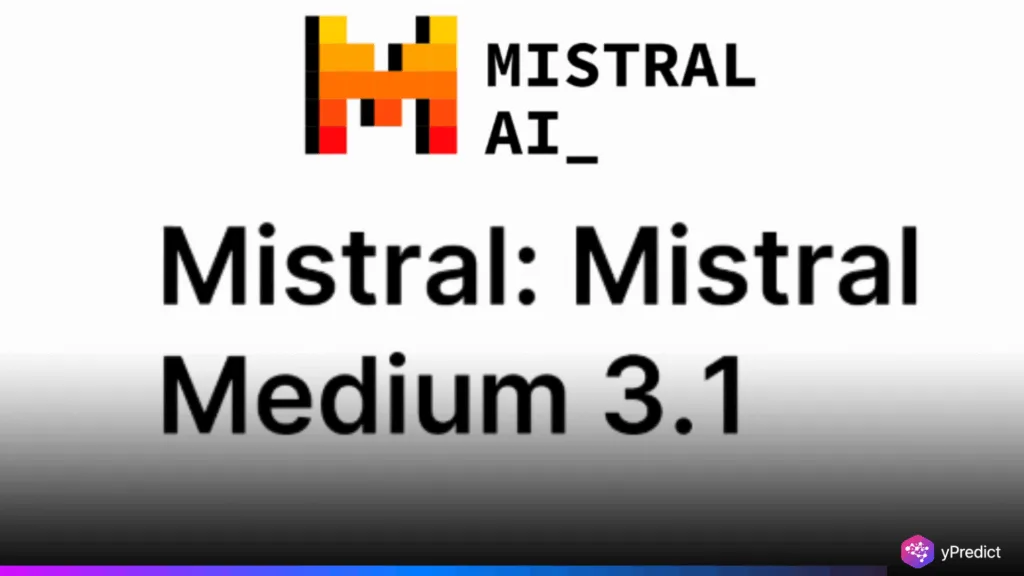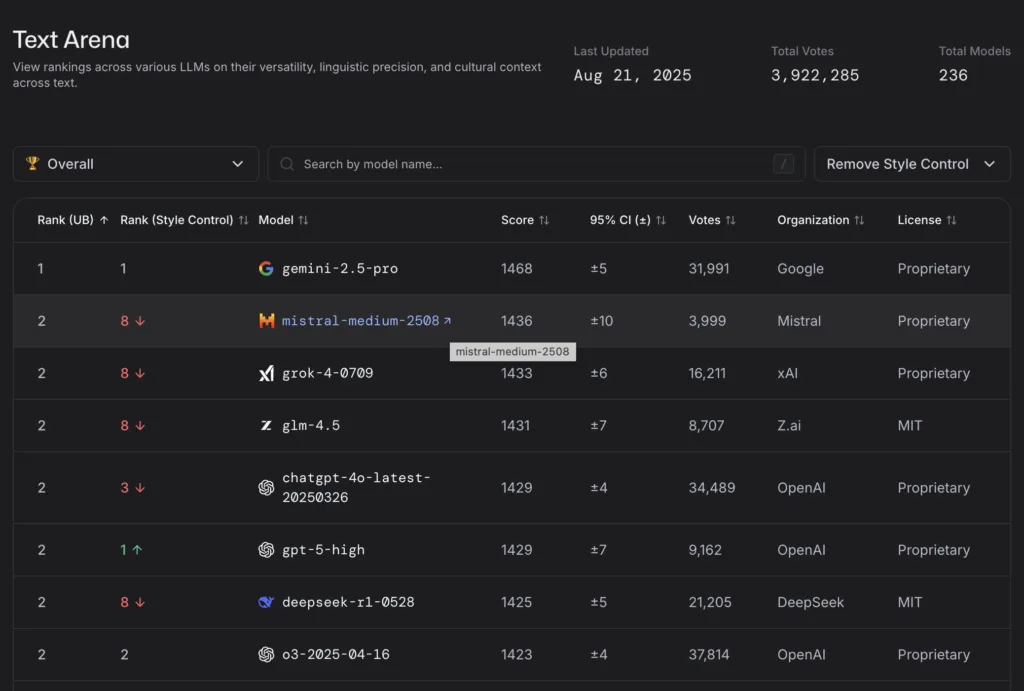
Mistral Medium 3.1 has gone to the second overall spot on the AI leaderboard, causing a significant upheaval. The model has outperformed several well-known rivals because it was built for speed and efficiency. This includes Claude from Anthropic and GPT from OpenAI. Thus, Mistral’s success is indicative of the market’s increasing need for useful and affordable language models.
Can Mistral Medium 3.1 Continue This Winning Streak?
The mid-sized Mistral Medium 3.1 performs better than several heavyweight models, per the latest rankings. It placed in the top three for coding and complex text queries, and first for English performance without style control. Additionally, this rise is significant given that the model has fewer votes than most of its rivals. This season’s most talked-about models are those that offer high accuracy in a smaller package.
Mistral Medium 3.1 Challenges Giants In Global Rankings
Google’s Gemini 2.5 Pro is still at the top of the AI rankings, but Mistral is closing the gap. Despite a slight decline in rankings, OpenAI models such as GPT-4o-latest and GPT-5-high are still very much in the running.

Thus, Mistral’s architecture prioritizes streamlined performance over larger models that depend on a lot of resources. This strategy appeals to businesses because it provides significant outcomes without requiring expensive infrastructure. This illustrates how the industry is moving toward more intelligent solutions rather than just larger ones.
Mistral Medium 3.1 Delivers Power With Unmatched Efficiency
Mistral Medium 3.1 strikes a balance between scalability, accuracy, and versatility. Additionally, it responds quickly to domain-specific queries and comprehensive instructions. This makes it appropriate for business use cases where cost and speed are just as important as accuracy.
Additionally, experts see this achievement as a paradigm shift for language models. Smaller, more effective models can now directly compete with the flagship releases of the biggest tech companies.
The Future Of Scalable AI Lies In Smart Design
Mistral Medium 3.1’s success indicates that design innovation will influence the next stage of AI development. All industries will favor models that combine efficiency and sound reasoning.
Mistral plans to build on this momentum with further improvements and possibly new releases aimed at scalability and cost optimization. Therefore, if it keeps going in this direction, it may become a serious competitor of Google and OpenAI.
Smaller Models Are Driving A New AI Revolution
The latest update demonstrates that size is no longer the only factor in AI dominance. Mistral Medium 3.1 demonstrates how well-tuned models can surpass more complex systems. The industry’s success on the AI leaderboard reflects its shift toward extremely effective and practical language models. Users should expect more competition, faster innovation, and easier access to AI solutions in the near future.






